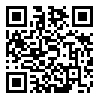دوره 9، شماره 1 - ( 1402 )
جلد 9 شماره 1 : e5 |
برگشت به فهرست نسخه ها
Download citation:
BibTeX | RIS | EndNote | Medlars | ProCite | Reference Manager | RefWorks
Send citation to:



BibTeX | RIS | EndNote | Medlars | ProCite | Reference Manager | RefWorks
Send citation to:
Ganjali A, Soleimani G, Shafighi Shahri E, Teimouri A, Yaghoubi S. Children's Mask-Wearing Behaviors and the Factors that go along with them during the COVID-19 Pandemic. CJP 2023; 9 (1) :5-5
URL: http://caspianjp.ir/article-1-188-fa.html
URL: http://caspianjp.ir/article-1-188-fa.html
Children's Mask-Wearing Behaviors and the Factors that go along with them during the COVID-19 Pandemic. مجله کاسپین کودکان. 1402; 9 (1) :5-5
چکیده: (2721 مشاهده)
Background and Objective: Based on WHO, mask wearing may prevent coronavirus disease 2019 (COVID-19) transmission. The aim of the present study was to investigate the prevalence of mask wearing and its related factors in Zahedan, southeastern Iran.
Methods: This cross-sectional study was carried out to investigate mask wearing in 408 children aged 2 to 18 years who were referred to specialized pediatric clinics at Zahedan University of Medical Sciences in Zahedan, Iran. The study ran in 2021-2022, and participants or their parents were asked about age, gender, number of children in the family, father's and mother's occupation, father's and mother's education, and family socioeconomic status. The SPSS 20 with a significance level of 0.05 was used to analyze the data.
Findings: The rate of mask wearing was 61.52%. Of the children who adhered to wearing masks, 57.77 % wore three layers, 94.42% wore well-fitting masks, and 65.34 % changed their masks at least three times per day. About 53.50% of the parents of the children who refused to wear masks did not believe in this behavior, and the others had economic problems. Mask-wearing was significantly influenced by all socio-demographic factors (p< 0.001).
Conclusion: It was found that 62% of the children wore masks. The majority of children who adhered to wearing masks used three layers, were adapted and changed masks at least three times per day. The majority of those who refused to wear masks did not believe in this treatment. Socio-demographic factors had a significant impact on mask wearing.
Methods: This cross-sectional study was carried out to investigate mask wearing in 408 children aged 2 to 18 years who were referred to specialized pediatric clinics at Zahedan University of Medical Sciences in Zahedan, Iran. The study ran in 2021-2022, and participants or their parents were asked about age, gender, number of children in the family, father's and mother's occupation, father's and mother's education, and family socioeconomic status. The SPSS 20 with a significance level of 0.05 was used to analyze the data.
Findings: The rate of mask wearing was 61.52%. Of the children who adhered to wearing masks, 57.77 % wore three layers, 94.42% wore well-fitting masks, and 65.34 % changed their masks at least three times per day. About 53.50% of the parents of the children who refused to wear masks did not believe in this behavior, and the others had economic problems. Mask-wearing was significantly influenced by all socio-demographic factors (p< 0.001).
Conclusion: It was found that 62% of the children wore masks. The majority of children who adhered to wearing masks used three layers, were adapted and changed masks at least three times per day. The majority of those who refused to wear masks did not believe in this treatment. Socio-demographic factors had a significant impact on mask wearing.
| بازنشر اطلاعات | |
 |
این مقاله تحت شرایط Creative Commons Attribution-NonCommercial 4.0 International License قابل بازنشر است. |




